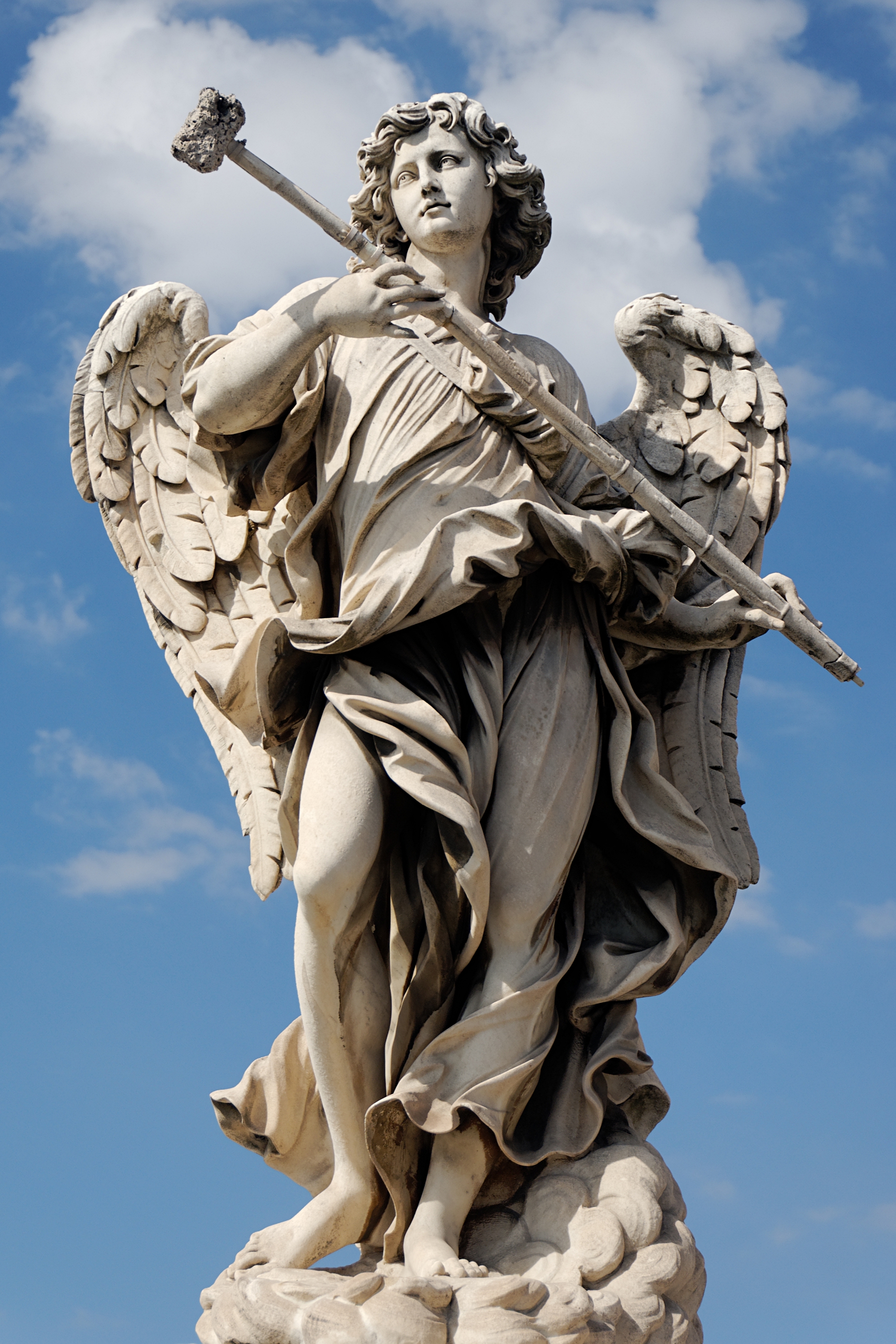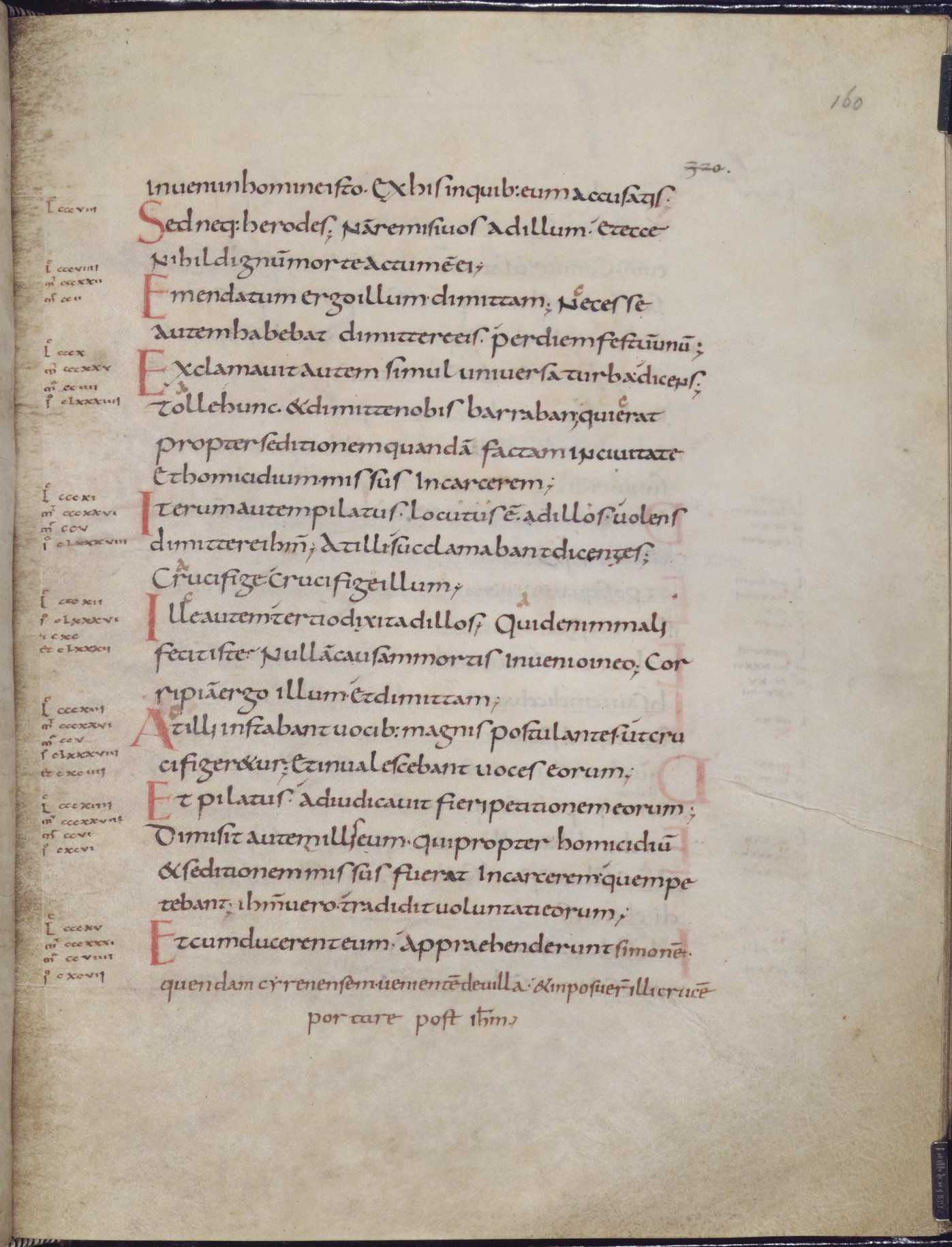|
Psalm 69
Psalm 69 is the 69th psalm of the Book of Psalms, beginning in English in the King James Version: "Save me, O God; for the waters are come in unto my soul". It is subtitled: "To the chief musician, upon Shoshannim, a Psalm of David". The Book of Psalms is part of the Ketuvim, third section of the Tanakh, Hebrew Bible, and a book of the Christianity, Christian Old Testament. In the slightly different numbering system used in the Greek Septuagint version of the Bible and in the Latin Vulgate, this psalm is Psalm 68. In Latin, it is known as . It has 36 verses (37 in Hebrew verse numbering). Several verses from Psalm 69 are Quotations from the Hebrew Bible in the New Testament, quoted in the New Testament. It forms a regular part of Jewish history, Jewish, Catholic Church, Catholic, Lutheranism, Lutheran, Anglicanism, Anglican and other Protestant liturgies. Uses New Testament This psalm is Quotations from the Hebrew Bible in the New Testament, quoted or referred to in several ... [...More Info...] [...Related Items...] OR: [Wikipedia] [Google] [Baidu] |
Book Of Psalms
The Book of Psalms ( , ; ; ; ; , in Islam also called Zabur, ), also known as the Psalter, is the first book of the third section of the Tanakh (Hebrew Bible) called ('Writings'), and a book of the Old Testament. The book is an anthology of Hebrew religious hymns. In the Jewish and Western Christian traditions, there are 150 psalms, and several more in the Eastern Christian churches. The book is divided into five sections, each ending with a doxology, a hymn of praise. There are several types of psalms, including hymns or songs of praise, communal and individual laments, royal psalms, imprecation, and individual thanksgivings. The book also includes psalms of communal thanksgiving, wisdom, pilgrimage and other categories. Many of the psalms contain attributions to the name of King David and other Biblical figures including Asaph, the sons of Korah, Moses and Solomon. Davidic authorship of the Psalms is not accepted as historical fact by modern scholars, who view it a ... [...More Info...] [...Related Items...] OR: [Wikipedia] [Google] [Baidu] |
Anglicanism
Anglicanism, also known as Episcopalianism in some countries, is a Western Christianity, Western Christian tradition which developed from the practices, liturgy, and identity of the Church of England following the English Reformation, in the context of the Protestant Reformation in Europe. It is one of the largest branches of Christianity, with around 110 million adherents worldwide . Most are members of national or regional Ecclesiastical province#Anglican Communion, ecclesiastical provinces of the international Anglican Communion, one of the largest Christian bodies in the world, and the world's third-largest Christian communion. When united and uniting churches, united churches in the Anglican Communion and the breakaway Continuing Anglican movement were not counted, there were an estimated 97.4 million Anglicans worldwide in 2020. Adherents of Anglicanism are called ''Anglicans''; they are also called ''Episcopalians'' in some countries. The provinces within the Anglican ... [...More Info...] [...Related Items...] OR: [Wikipedia] [Google] [Baidu] |
John 19
John 19 is the nineteenth Chapters and verses of the Bible, chapter of the Gospel of John in the New Testament of the Christianity, Christian Bible. The book containing this chapter is Anonymity, anonymous, but early Christian tradition uniformly affirmed that John the Evangelist, John composed this Gospel.Holman Illustrated Bible Handbook. Holman Bible Publishers, Nashville, Tennessee. 2012. This chapter records the events on the day of the Crucifixion of Jesus, crucifixion of Jesus, until Burial of Jesus, his burial.Halley, Henry H. ''Halley's Bible Handbook'': an Abbreviated Bible Commentary. 23rd edition. Zondervan Publishing House. 1962. Text The original text was written in Koine Greek. Chapters and verses of the Bible, This chapter is divided into 42 verses. Textual witnesses Some early Biblical manuscript, manuscripts containing the text of this chapter are: *Papyrus 90 (AD 150–175; extant verses 1–7) *Papyrus 66 ( 200; complete) *Papyrus 121 (3rd century; extant vers ... [...More Info...] [...Related Items...] OR: [Wikipedia] [Google] [Baidu] |
Luke 23
Luke 23 is the twenty-third chapter of the Gospel of Luke in the New Testament of the Christianity, Christian Bible. The book containing this chapter is Anonymity, anonymous, but early Christian tradition uniformly affirmed that Luke the Evangelist composed this Gospel as well as the Acts of the Apostles.Holman Illustrated Bible Handbook. Holman Bible Publishers, Nashville, Tennessee. 2012. This chapter records the trial of Jesus, trial of Jesus Christ before Pontius Pilate, Jesus' meeting with Herod Antipas, and his Crucifixion of Jesus, crucifixion, death and Burial of Jesus, burial.Halley, Henry H. ''Halley's Bible Handbook'': an Abbreviated Bible Commentary. 23rd edition. Zondervan Publishing House. 1962. Text The original text was written in Koine Greek. Some early Biblical manuscript#New Testament manuscripts, manuscripts containing the text of this chapter are: *Papyrus 75 (AD 175–225) *Codex Vaticanus (325–350) *Codex Sinaiticus (330–360) *Codex Bezae () *Codex Washi ... [...More Info...] [...Related Items...] OR: [Wikipedia] [Google] [Baidu] |
Mark 15
Mark 15 is the fifteenth chapter of the Gospel of Mark in the New Testament of the Christianity, Christian Bible. This chapter records the narrative of Jesus' Passion (Christianity), passion, including his Pilate's court, trial before Pontius Pilate and then his Crucifixion of Christ, crucifixion, death and Entombment of Christ, entombment. Jesus' trial before Pilate and his crucifixion, death, and burial are also recorded in Matthew 27, Luke 23, and Joh18:28–19:42 Text The original text was written in Koine Greek. Chapters and verses of the Bible, This chapter is divided into 47 verses. Textual witnesses Some early manuscripts containing the text of this chapter are: *Codex Vaticanus (~325–350) *Codex Sinaiticus (~330–360) *Codex Bezae (~400) *Codex Washingtonianus (~400) *Codex Alexandrinus (~400–440) *Codex Ephraemi Rescriptus (~450; complete) Old Testament references * : Psalm 22, Psalm * : Psalm 22, Psalm * : Psalm 22, Psalm * : Psalm 69, Psalm New Testamen ... [...More Info...] [...Related Items...] OR: [Wikipedia] [Google] [Baidu] |
Matthew 27
Matthew 27 is the 27th chapter in the Gospel of Matthew, part of the New Testament in the Christian Bible. This chapter contains Matthew's record of the day of the trial, crucifixion and burial of Jesus. Scottish theologian William Robertson Nicoll notes that "the record of this single day is very nearly one-ninth of the whole book".Nicoll, W. R.Expositor's Greek Testament on Matthew 27 accessed 3 March 2017 Text The original text was written in Koine Greek. This chapter is divided into 66 verses. Textual witnesses Some early manuscripts containing the text of this chapter are: * Papyrus 104 (AD ~250; extant verses 34–37, 43, 45) * Codex Vaticanus (325–350) * Codex Sinaiticus (330–360) * Codex Bezae ( 400; extant verses 1, 13–66) * Codex Washingtonianus ( 400) *Codex Ephraemi Rescriptus ( 450; extant verses 1–10, 47–66) * Papyrus 105 (5th/6th century; extant verses 62–64) * Codex Purpureus Rossanensis (6th century) * Codex Petropolitanus Purpureus (6th century; ext ... [...More Info...] [...Related Items...] OR: [Wikipedia] [Google] [Baidu] |
Vinegar
Vinegar () is an aqueous solution of diluted acetic acid and trace compounds that may include flavorings. Vinegar typically contains from 5% to 18% acetic acid by volume. Usually, the acetic acid is produced by a double fermentation, converting simple sugars to ethanol using yeast and ethanol to acetic acid using acetic acid bacteria. Many types of vinegar are made, depending on source materials. The product is now mainly used in the culinary arts as a flavorful, acidic cooking ingredient or in pickling. Various types are used as condiments or garnishes, including balsamic vinegar and malt vinegar. As the most easily manufactured mild acid, it has a wide variety of industrial and domestic uses, including functioning as a household cleaner. Etymology The word "vinegar" arrived in Middle English from Old French (''vyn egre''; sour wine), which in turn derives from Latin: (wine) + (neuter gender of , sour). Vinegar was formerly also called . The word "acetic" derives from ... [...More Info...] [...Related Items...] OR: [Wikipedia] [Google] [Baidu] |
Torah
The Torah ( , "Instruction", "Teaching" or "Law") is the compilation of the first five books of the Hebrew Bible, namely the books of Genesis, Exodus, Leviticus, Numbers and Deuteronomy. The Torah is also known as the Pentateuch () or the Five Books of Moses. In Rabbinical Jewish tradition it is also known as the Written Torah (, ). If meant for liturgic purposes, it takes the form of a Torah scroll ( '' Sefer Torah''). If in bound book form, it is called '' Chumash'', and is usually printed with the rabbinic commentaries (). In rabbinic literature, the word ''Torah'' denotes both the five books ( "Torah that is written") and the Oral Torah (, "Torah that is spoken"). It has also been used, however, to designate the entire Hebrew Bible. The Oral Torah consists of interpretations and amplifications which according to rabbinic tradition have been handed down from generation to generation and are now embodied in the Talmud and Midrash. Rabbinic tradition's underst ... [...More Info...] [...Related Items...] OR: [Wikipedia] [Google] [Baidu] |
John 15
John 15 is the fifteenth chapter in the Gospel of John in the New Testament section of the Christian Bible. It is part of what New Testament scholars have called the 'Farewell Discourse, farewell discourse' of Jesus. It has historically been a source of Christian teaching and Christology, Christological debate and reflection, and its images (particularly of Jesus as the vine) have been influential in Christian art and iconography. The chapter implies one of the highest and most developed Christologies to be found in the New Testament. The original text was written in Koine Greek. The book containing this chapter is anonymity, anonymous, but early Christian tradition uniformly affirmed that John the Evangelist, John composed this Gospel.Holman Illustrated Bible Handbook. Holman Bible Publishers, Nashville, Tennessee. 2012 Text The original text was written in Koine Greek. Chapters and verses of the Bible, This chapter is divided into 27 verses. Textual witnesses Some early manuscr ... [...More Info...] [...Related Items...] OR: [Wikipedia] [Google] [Baidu] |
Masoretic Text
The Masoretic Text (MT or 𝕸; ) is the authoritative Hebrew and Aramaic text of the 24 books of the Hebrew Bible (''Tanakh'') in Rabbinic Judaism. The Masoretic Text defines the Jewish canon and its precise letter-text, with its vocalization and accentuation known as the ''masora''. Referring to the Masoretic Text, ''masora'' specifically means the diacritic markings of the text of the Jewish scriptures and the concise marginal notes in manuscripts (and later printings) of the Tanakh which note textual details, usually about the precise spelling of words. It was primarily copied, edited, and distributed by a group of Jews known as the Masoretes between the 7th and 10th centuries of the Common Era (CE). The oldest known complete copy, the Leningrad Codex, dates to 1009 CE and is recognized as the most complete source of biblical books in the Ben Asher tradition. It has served as the base text for critical editions such as Biblia Hebraica Stuttgartensia and Adi. The d ... [...More Info...] [...Related Items...] OR: [Wikipedia] [Google] [Baidu] |
Disciple (Christianity)
In Christianity, a disciple is a dedicated follower of Jesus in Christianity, Jesus. This term is found in the New Testament only in the Canonical Gospels, Gospels and Acts of the Apostles, Acts. Originating in the ancient Near East, the concept of a disciple is an adherent of a teacher. Discipleship is not the same as being a student in the modern sense; a disciple in the ancient biblical world actively imitation, imitated both the life and teaching of the master. It was a deliberate apprenticeship which made the fully formed disciple a living copy of the master. The New Testament records many followers of Jesus during Ministry of Jesus, his ministry. Some disciples were given a Christian mission, mission, such as the Matthew 10, Little Commission, the Seventy disciples, commission of the seventy in Luke's Gospel, the Great Commission after the resurrection of Jesus, or the Conversion of Paul the Apostle, conversion of Paul, making them ''Apostles in the New Testament, apostle ... [...More Info...] [...Related Items...] OR: [Wikipedia] [Google] [Baidu] |
Second Temple
The Second Temple () was the Temple in Jerusalem that replaced Solomon's Temple, which was destroyed during the Siege of Jerusalem (587 BC), Babylonian siege of Jerusalem in 587 BCE. It was constructed around 516 BCE and later enhanced by Herod the Great around 18 BCE, consequently also being known as Herod's Temple thereafter. Defining the Second Temple period and standing as a pivotal symbol of Jewish identity, it was the basis and namesake of Second Temple Judaism. The Second Temple served as the chief place of worship, ritual sacrifice (''korban''), and communal gathering for the Jewish people, among whom it regularly attracted pilgrims for the Three Pilgrimage Festivals: Passover, Shavuot, and Sukkot. In 539 BCE, the Fall of Babylon, Persian conquest of Babylon enabled the Achaemenid Empire to expand across the Fertile Crescent by annexing the Neo-Babylonian Empire, including the territory of the former Kingdom of Judah, which had been annexed as the Yehud (Babylonian provi ... [...More Info...] [...Related Items...] OR: [Wikipedia] [Google] [Baidu] |










